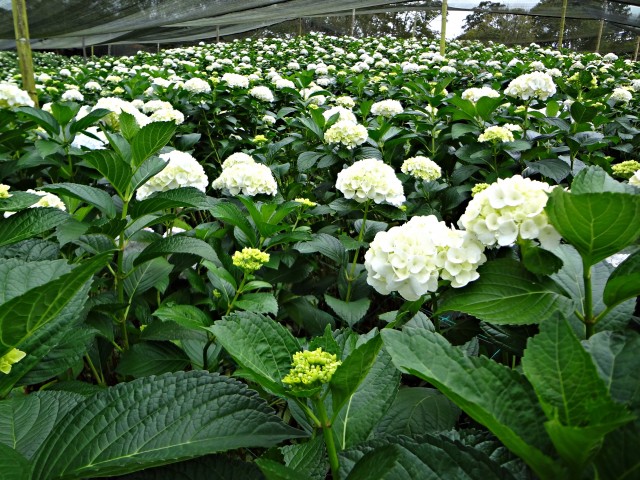
On the outskirts of Medellín near the small settlement of La Ceja exists a well-oiled hydrangea-producing machine known as Entre Flores.
The owner of this machine (or farm, as it’s known colloquially), Mr. Daniel Piedrahita, has been cultivating hydrangeas for exportation year-round for the last eighteen years.
Not only is he an expert in the business of hydrangeas but also a partner of the Colombian Society of Orchidology and hobbyist orchid collector—his personal collection contains a staggering 5,000 species (3,000 endemics and 2,000 hybrids).
Recently, in conjunction with local tour operator Casa de Colombia, Entre Flores has begun offering interactive tours to guests interested in learning about the cultivation of hydrangeas and orchids.
I had the opportunity to participate in the tour myself; this was my experience.
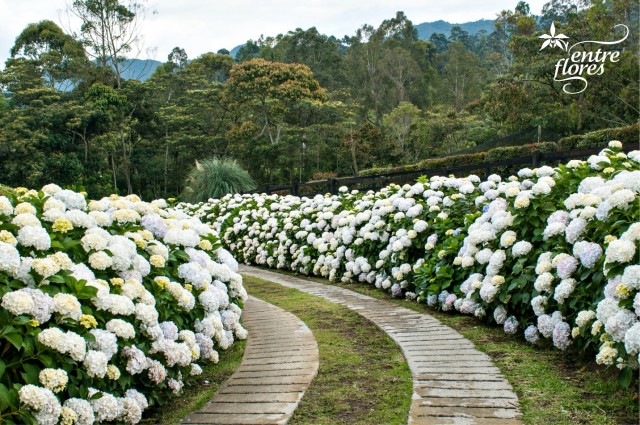
The Tour
A full-day tour of Entre Flores begins with pickup from your hotel or hostel in Medellín at 8:30 a.m. to arrive at the hydrangea crop by 10 a.m.
The day of my tour, the weather was overcast which turned out to be perfect since we were outdoors for most of the day.
Upon arrival, we were welcomed by Mr. Piedrahita and a tour organizer by the name of Lina Toro. Both were incredibly friendly and eager to get to know the tour group.
We were seated in a covered dining area surrounded by gardens and lush jungle and offered snacks and refreshments; we then took turns introducing ourselves before receiving a briefing on the day’s proceedings and an introduction to the operation.
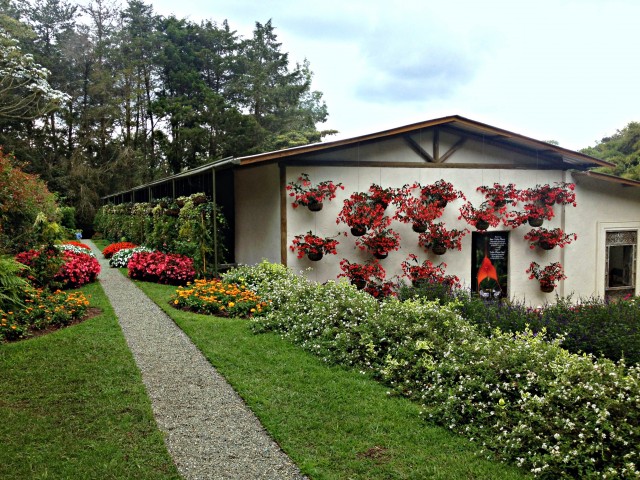
We then followed our guide to the hydrangeas as he rattled off fascinating statistics about flower production—namely that Colombia is the second largest flower producer in the world after Holland and that 90 percent of his hydrangeas are exported to the United States.
We learned of the precise methods used to consistently produce hydrangeas twelve months of the year, the farm’s natural methods of pest control (cannibalistic insects!) and fertilization, and how important good workers are in his business.
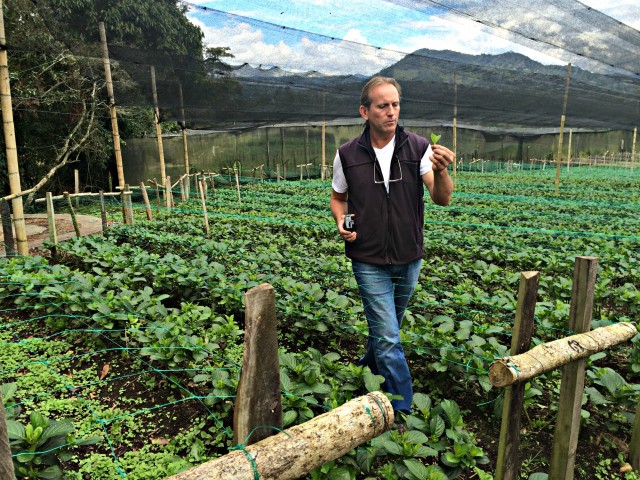
We then reached the interactive part of the tour–when we arrived at the crop of hydrangeas that was fully grown and ready to be cut, Mr. Piedrahita enthusiastically explained that we were at liberty to cut as many hydrangeas as we would like to take home.
He handed several of us garden shears and we skipped off into the towering rows of flowers to find our perfect blossoms, being careful not to slip on the wet soil.
“As many as we wanted” was no exaggeration—more and more stalks were thrust into my hands until I had six enormous bunches of hydrangeas in my possession. I could hardly carry them all.
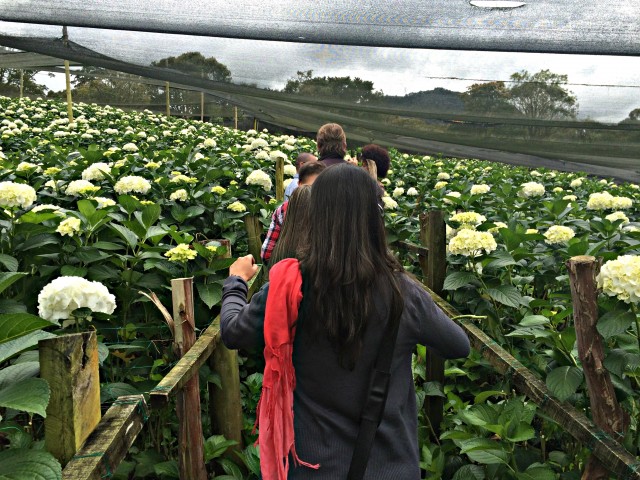
Following the interactive hydrangea cutting session, we were led to the packaging room where flowers are prepped for shipping to their worldwide destinations (England and Japan are the largest buyers after the U.S.).
At this stage, the flowers undergo quality control and are sorted by size and color—as was explained to us, clients often make very specific requests and each order is tailored to suit their needs.

Flowers can also be dyed festive colors for special occasions or to fit different seasons.
Finally, after our flowers were packaged and ready to take home, we completed the hydrangea portion of the tour and it was time for lunch.
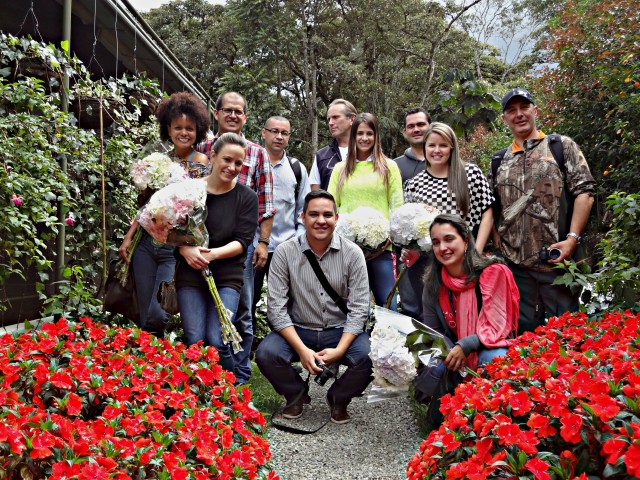
Lunch Break
An hour is allotted between 12:15 p.m. and 1:15 p.m. to eat lunch.
Back in the dining area where we’d started our day, we were served one of four meal choices which we had selected prior to the tour:
- Grilled chicken
- Grilled salmon
- Grilled chicharron
- Portobello with cheese (vegetarian)
Each was accompanied by salad and grilled potatoes and we were served our choice of soda, juice, tea, coffee, or water to drink. We were also served small desserts of bocadillos and coconut candies. It was an excellent meal.
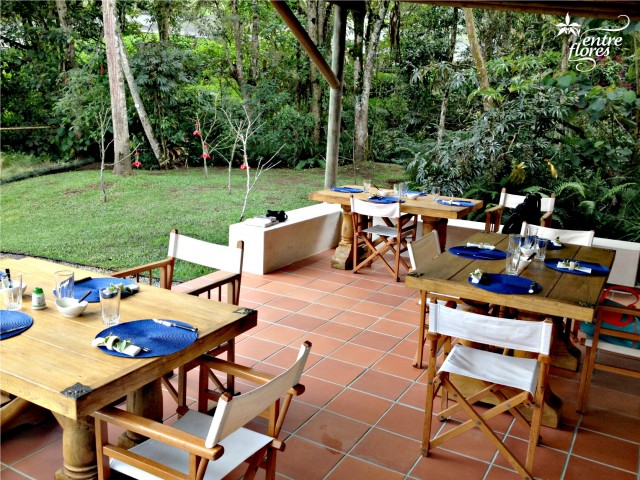
While finishing our lunches, we were able to admire the surrounding garden which contained several hummingbird feeders and is home to several other bird species as well, including a beautiful long-tailed bird known locally as the Barranquero (scientific name: Momotus momota).
Even during our downtime, the biodiversity surrounding us was astounding.
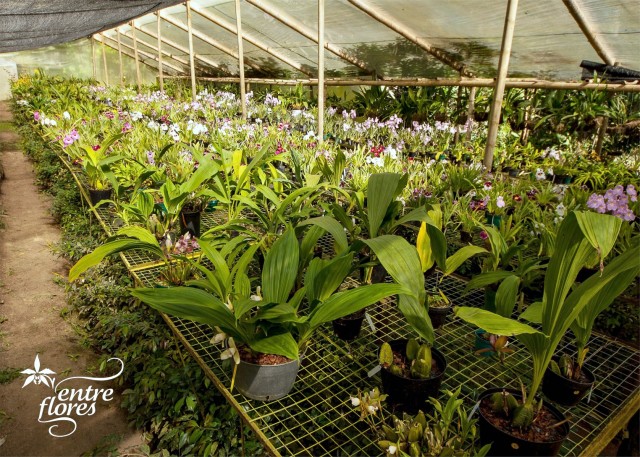
The Orchid Collection
After we’d all finished eating, we loaded into the tour van to be driven to Mr. Piedrahita’s personal property where we would take a stroll through his garden and eventually end up at the greenhouse which is home to his impressive orchid collection.
The property is lush and well-manicured and the footpath along which we walked was lined on either side with several endemic orchid species, though most were not in bloom at the time.
The orchid greenhouse was a true highlight of the day. Mr. Piedrahita’s passion for orchids was palpable and contagious.
In the hour or so we were inside, I learned (and forgot) more about orchids than I ever knew I could.
Reproductive mechanisms, growing conditions, common and scientific names, cross-breeding methods—you name it, we learned it.
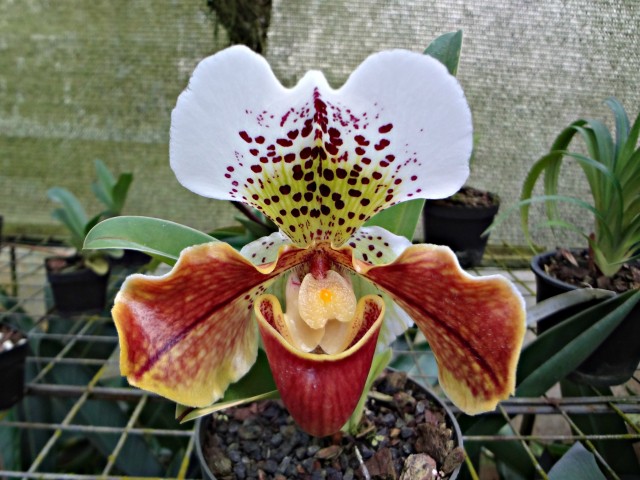
When we weren’t wandering off to photograph the gorgeous flowers, the entire group was enraptured by his every word, eager to soak in all the information possible.
A typical tour ends at 3 p.m. and arrives back in Medellin by 4:30 p.m.; ours had begun a little behind schedule and thus ended closer to 4 p.m.
It is safe to say that every guest on this tour, male and female, thoroughly enjoyed the day spent with Entre Flores.
For those looking for a nature activity near Medellín that’s unique and a little bit off the beaten path, a tour with Entre Flores is an excellent choice.
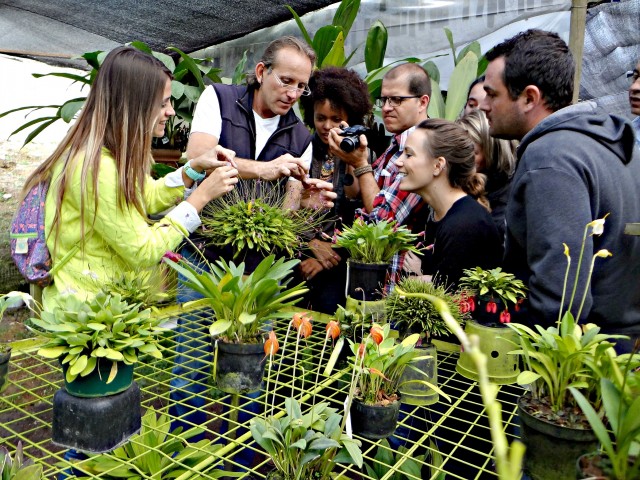
Practical Info
The price of this full-day, guided walking tour is $100 per person for groups of five or more people, which includes transportation to and from Entre Flores as well as lunch and snacks throughout the day.
For groups of less than five, the cost is $85 per person and transportation is not provided by the tour company, though Casa de Colombia is happy to recommend drivers who can be hired for the day.
Tours typically leave in the morning as mentioned previously, but afternoon tours are available as well. With lunch included, the afternoon tour begins at noon; without lunch, the tour begins at 1pm and the cost is reduced by $5.
Tours are available in Spanish and English.
It is advisable to wear comfortable shoes that you don’t mind getting dirty as some parts of the walking path can be muddy.
Entre Flores tours can be arranged for any day of the week through Casa de Colombia, whose office is located in the Oviedo Shopping Center on Avenida El Poblado; see info below for their hours of operation.
________
The tour was provided compliments of Casa de Colombia and Entre Flores.





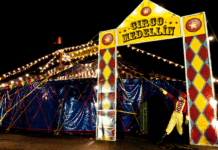






Thank you for this article! I live in the “settlement”* of La Ceja. I have driven by the numerous flower farms many times and know a number of people who work in them, but have never had the opportunity to learn how they work. I hope to be able to take this tour in the near future.
*I don’t really feel like a pioneer in this town of 40,000 people, but I do understand that when you are looking south from a city of 3 million people, everything looks like a settlement. 🙂
Thank you Leah for your awesome article! We are very glad you liked it and hopefully this 2015 may receive as many visitors as we can, starting with Mr. Bade. Wish you a super great traveling year and all MedellinLiving fellows a promising one!